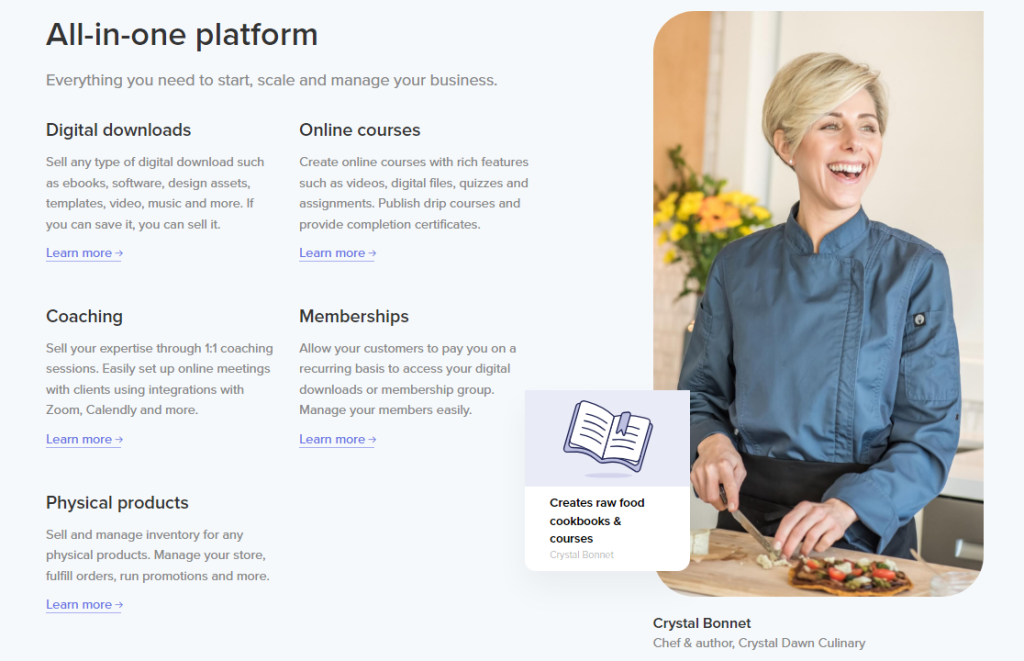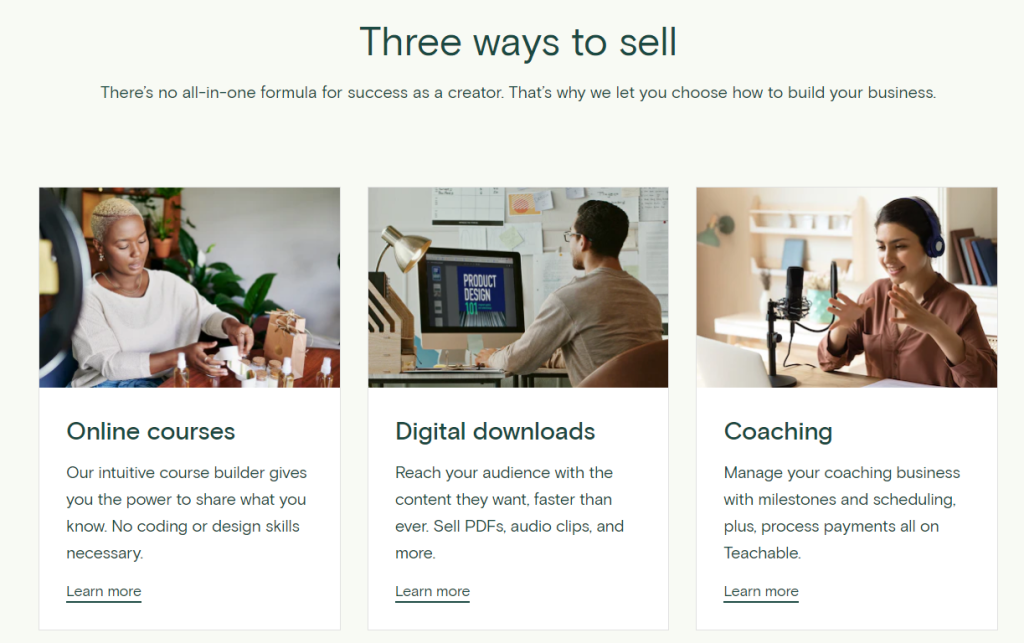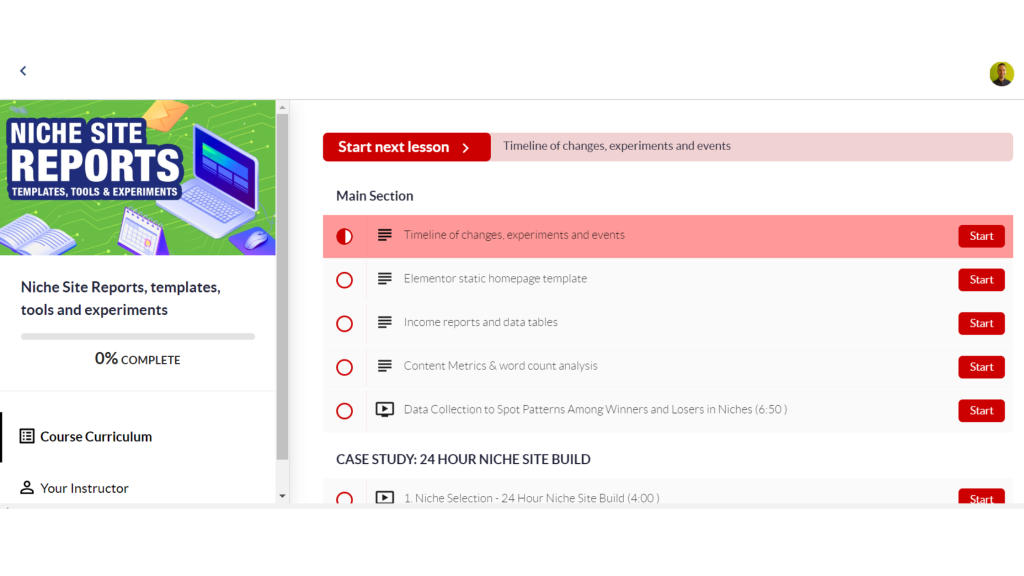When it comes to selling products online, having a reliable and efficient platform is crucial for any business. Payhip and Teachable are two popular platforms that offer creators the ability to sell their digital products online.
Teachable is a great platform for hosting online courses but it does get a little bit expensive. Payhip is my recommendation as you can also host courses and sell other forms of digital products.
[lasso ref=”sell-digital-downloads-courses-payhip” id=”1412″ link_id=”2856″]
Payhip
Payhip is an all-in-one e-commerce platform that allows creators to sell their digital products, including ebooks, music, software, and more. The platform offers a forever-free plan that includes unlimited access to its powerful features, making it an excellent alternative for creators on a budget. Payhip’s pricing structure is much more affordable compared to Teachable, which requires a paid monthly subscription.

One of the standout features of Payhip is its support for memberships. With Payhip, you can create and manage membership groups, allowing customers to pay you on a recurring basis to access your digital downloads or membership group. Payhip also offers integrations with Zoom and Calendly, making it easy to set up online meetings with clients for coaching sessions.
Teachable
Teachable, on the other hand, is an online course platform that allows creators to create and sell courses online. The platform offers advanced features like removable branding and theme customization, making it a popular choice for creators who want a more professional-looking course. Teachable’s pricing structure is higher than Payhip, but it offers more advanced features that cater to the needs of course creators.

One of the standout features of Teachable is its course creation tools. With Teachable, you can create and customize your course content, including video lessons, quizzes, and assignments. Teachable also offers integrations with a range of third-party tools, including Zapier, Mailchimp, and Google Analytics.
Both platforms offer a range of features that cater to different types of creators. Payhip is an excellent option for creators who want to sell digital products without the added cost of a monthly subscription. Teachable, on the other hand, is a better option for creators who want to create and sell online courses.
Here is a quick breakdown of the key differences between Payhip and Teachable:
| Platform | Payhip | Teachable |
|---|---|---|
| Type | All-in-one e-commerce platform | Online course platform |
| Pricing | Forever-free plan with affordable pricing structure | Paid monthly subscription with higher pricing structure |
| Features | Unlimited access to powerful features | Advanced features like removable branding and theme customization |
| Target Audience | Creators on a budget | Course creators who want a more professional-looking course |
Key Features Comparison
When comparing Payhip and Teachable, it’s essential to compare the key features that each platform offers. Here is a comparison of some of the key features of Payhip and Teachable:
Membership and Online Course Features
Both Payhip and Teachable offer membership and online course features that allow you to create and sell your courses online. Payhip offers a range of features including digital downloads, online courses, memberships, and more. Teachable, on the other hand, offers features such as quizzes, assignments, and surveys. Both platforms allow you to create and sell your courses online, but Payhip is more focused on digital products, while Teachable is more focused on online courses.

E-commerce and Payment Features
Payhip and Teachable both offer e-commerce and payment features that allow you to sell your digital products and online courses online. Payhip offers a range of payment options, including Stripe and PayPal, while Teachable offers payment options such as credit cards and PayPal. Both platforms also provide reporting features that allow you to track your sales and revenue.
Integrations and Flexibility
Payhip and Teachable both offer a range of integrations that allow you to connect your platform to other tools and services. Payhip integrates with social media platforms such as Facebook and Twitter, while Teachable integrates with tools such as Zoom and Thinkific. Both platforms are flexible and easy to use, making them ideal for creators who want to sell their digital products and online courses online.
Pricing Structure
When it comes to pricing, Payhip and Teachable have different approaches. Payhip provides a forever-free plan that includes unlimited access to the platform’s powerful features, while Teachable also offers a free plan with only 1 published product of each type (course, coaching, downloads).
Payhip’s pricing structure is straightforward. It charges a transaction fee of 5% plus per sale on its free plan. On the other hand, its $29 Plus plan has a transaction fee of 2% per sale. If you want a 0% transaction fee, you can upgrade to their Pro plan, which costs $99 per month. This pricing structure is ideal for creators who sell low-priced products.
Teachable’s pricing structure is more complex. It has three plans: Basic, Professional, and Business. The Basic plan costs $39 per month, the Professional plan costs $119 per month, and the Business plan costs $499 per month. The Basic plan has a transaction fee of 5%, while the Professional and Business plans have no transaction fees.
In terms of free plans, Payhip is the clear winner. However, Teachable’s plans offer more advanced features such as course completion certificates, graded quizzes, and advanced reports. If you need these features, then Teachable is the better option.
Payment Options and Integrations
When it comes to payment options, both Payhip and Teachable offer a variety of choices. Payhip supports PayPal and Stripe, while Teachable offers PayPal, Stripe, and the Monthly Payment Gateway. If you are not eligible for Teachable’s native payment gateway, you can set up a custom payment gateway.
Payhip’s payment options are simple and straightforward. You can choose to accept payments through PayPal or Stripe, or both. The platform does not offer any other payment gateways, but it does allow you to set up custom checkout pages that can be customized to fit your brand.
Teachable’s payment options are more diverse. You can accept payments through PayPal, Stripe, and the Monthly Payment Gateway. The Monthly Payment Gateway allows you to offer payment plans to your students. You can also set up custom payment gateways if you are on the Pro plan or higher. Teachable also offers payment processing for multiple currencies, which can be helpful if you have an international audience.
Both platforms offer integrations with various third-party services. Payhip integrates with Mailchimp, Zapier, and Google Analytics, among others. Teachable offers integrations with Zapier, Mailchimp, ConvertKit, and more. Teachable also integrates with Facebook, Amazon, and Google Shopping, which can be helpful if you want to sell your courses on these platforms.
Email Marketing and Promotions
Email marketing and promotions can be powerful tools to increase your revenue. Both Payhip and Teachable offer features to help you with these aspects of your business.
Email Marketing
Payhip offers a built-in email marketing tool that allows you to create and send newsletters to your subscribers. You can also set up automated emails to be sent to customers who purchase your products. This feature is included in all Payhip plans.
Teachable also offers email marketing features, but they are only available in the Professional and Business plans. With these plans, you can create and send newsletters, as well as set up automated emails for your customers.
Promotions
Both Payhip and Teachable allow you to create coupon codes to offer discounts on your products. Payhip also offers a feature called “Pay what you want,” which allows customers to pay whatever price they choose for your product.
Teachable offers a more advanced promotions feature called “Upsells.” With this feature, you can offer additional products to customers after they have made a purchase. This can be a great way to increase your revenue and offer customers more value.
Reporting and Analytics
Both Payhip and Teachable offer some useful features regarding reporting and analytics for your business.
Payhip provides a dashboard where you can track sales, revenue, and customer data. You can also export your sales data to a CSV file for further analysis. Additionally, Payhip offers Google Analytics integration, which allows you to track your website traffic and sales data in one place.
On the other hand, Teachable offers a more comprehensive reporting and analytics system. You can track sales, revenue, and student progress, as well as view detailed course analytics. You can also set up custom reports to track specific metrics. Teachable also provides Google Analytics integration, as well as Facebook Pixel integration, which allows you to track your Facebook advertising campaigns.
[lasso ref=”sell-digital-downloads-courses-payhip” id=”1412″ link_id=”2857″]
Support and Customer Service
When it comes to support and customer service, both Payhip and Teachable offer different options to their users. Here’s what you can expect from each platform:
Payhip offers support via email and a contact form on their website. They aim to respond within 12 hours, and for urgent questions, they respond a lot quicker. Payhip recognizes all main holidays, so please expect slow response times during those days.
Payhip also has a help center where you can find answers to common questions. The help center is divided into different categories, such as getting started, payments, and promotions. Each category has a list of articles that provide detailed information on the topic.
Teachable provides support via email and a knowledge base. Their knowledge base is extensive and covers a wide range of topics, from getting started to advanced features. You can also access their knowledge base directly from your Teachable dashboard.
Teachable also offers live chat support for paid plans. This means that if you’re on a paid plan, you can chat with a support agent in real-time to get help with any issues you’re experiencing.
In terms of customer service, Teachable has a dedicated customer success team that works with creators to help them achieve their goals. The team provides personalized support and guidance to help creators succeed on the platform.
As you can see, Payhip and Teachable both offer a range of features to help you sell your products online. If you’re looking to sell a range of digital products, including memberships and coaching sessions, Payhip may be the better choice for you. On the other hand, if you’re looking to create and sell online courses, Teachable may be the better choice, thanks to its robust course creation tools and integrations.
The best platform for you will ultimately depend on your specific needs, goals, and budget.
